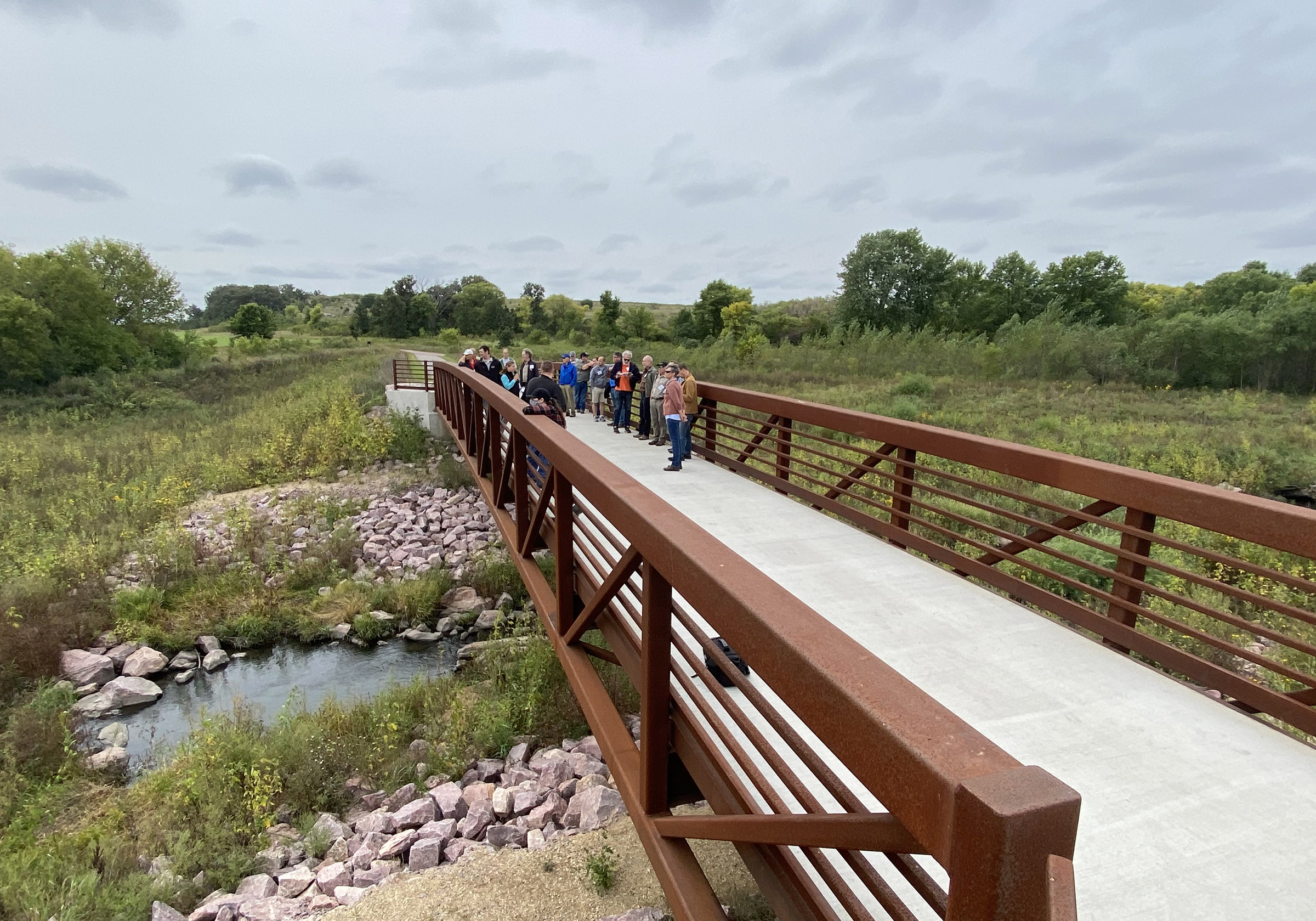 ,
, 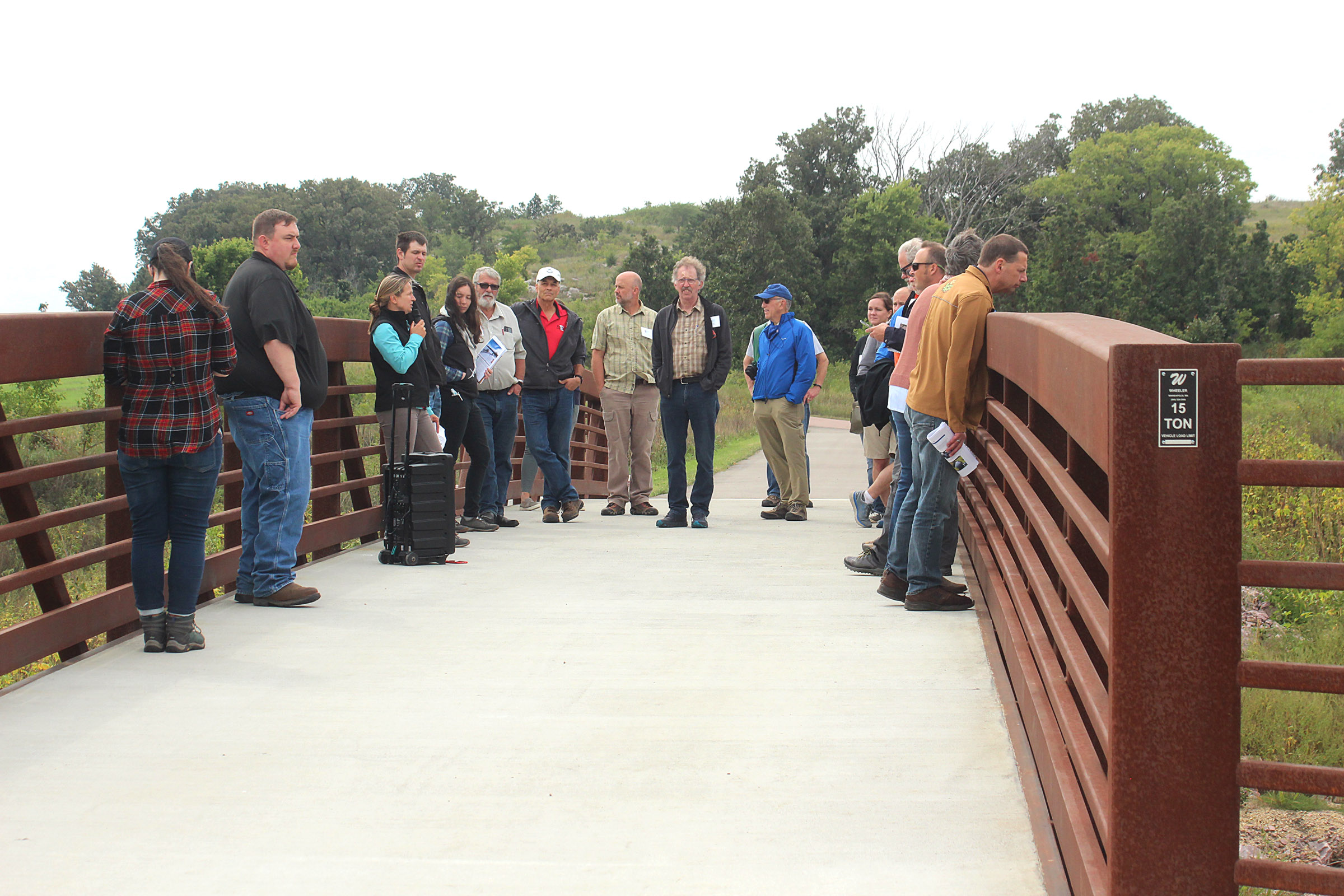 ,
, 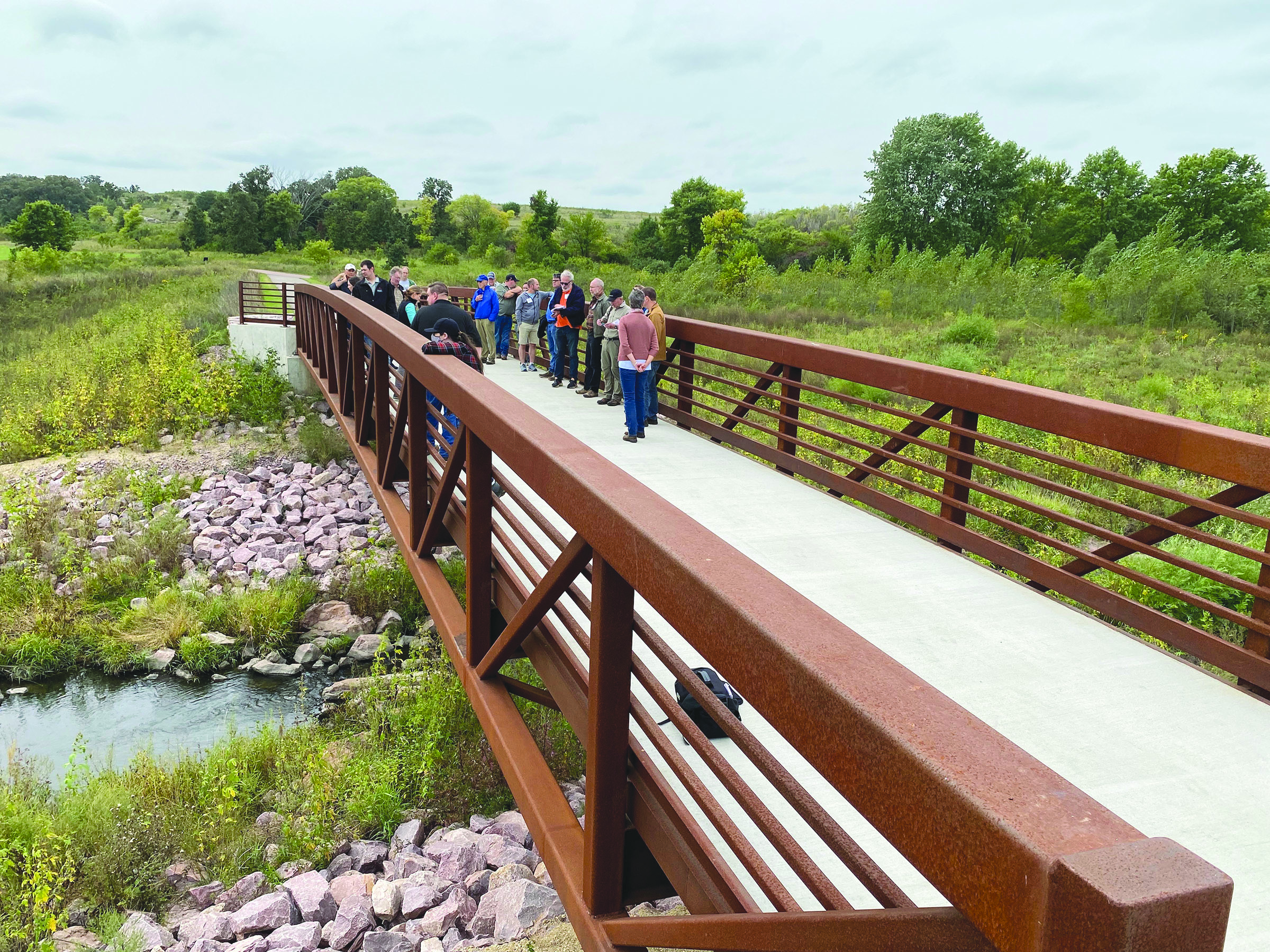 ,
, 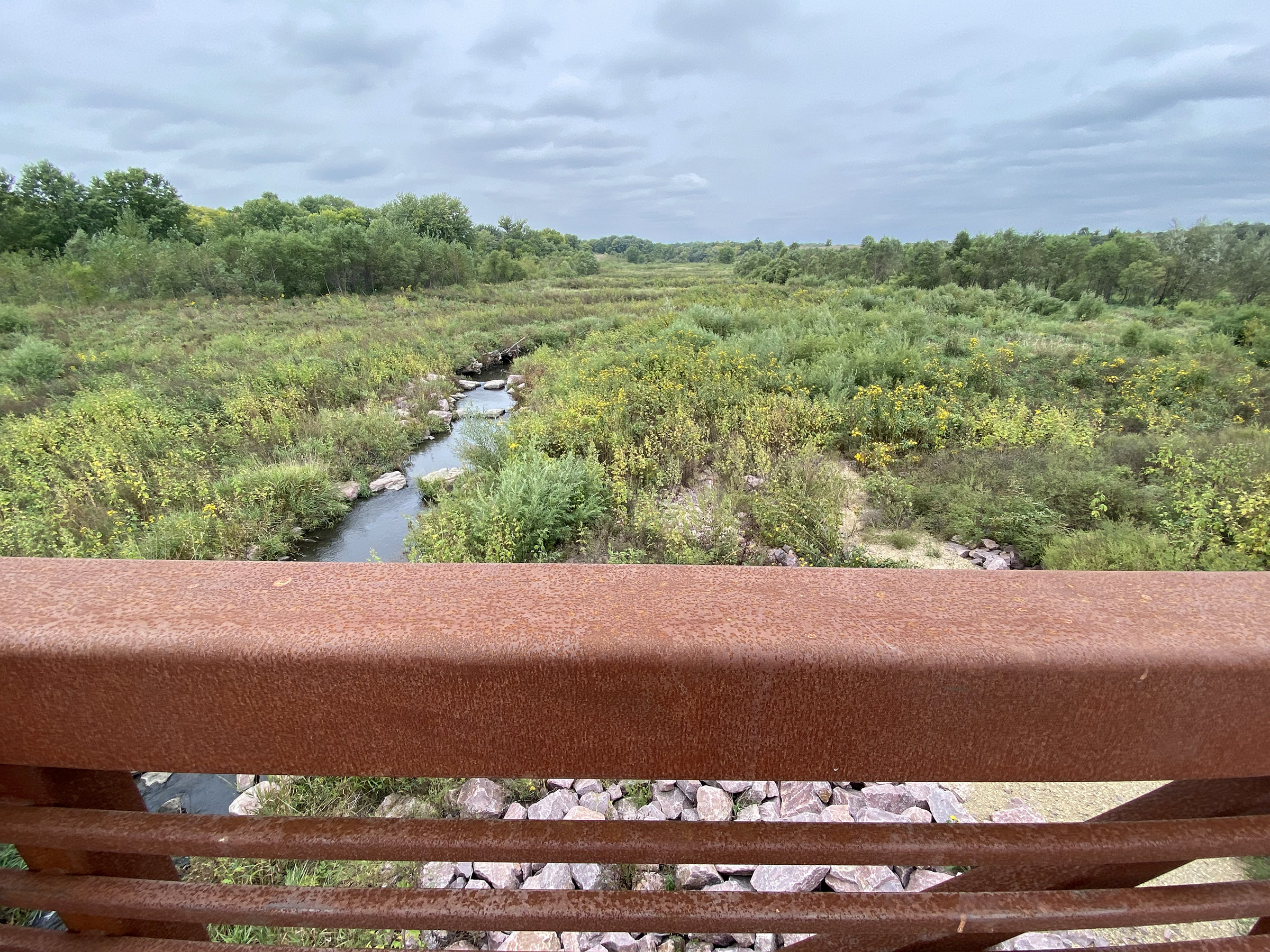 ,
, 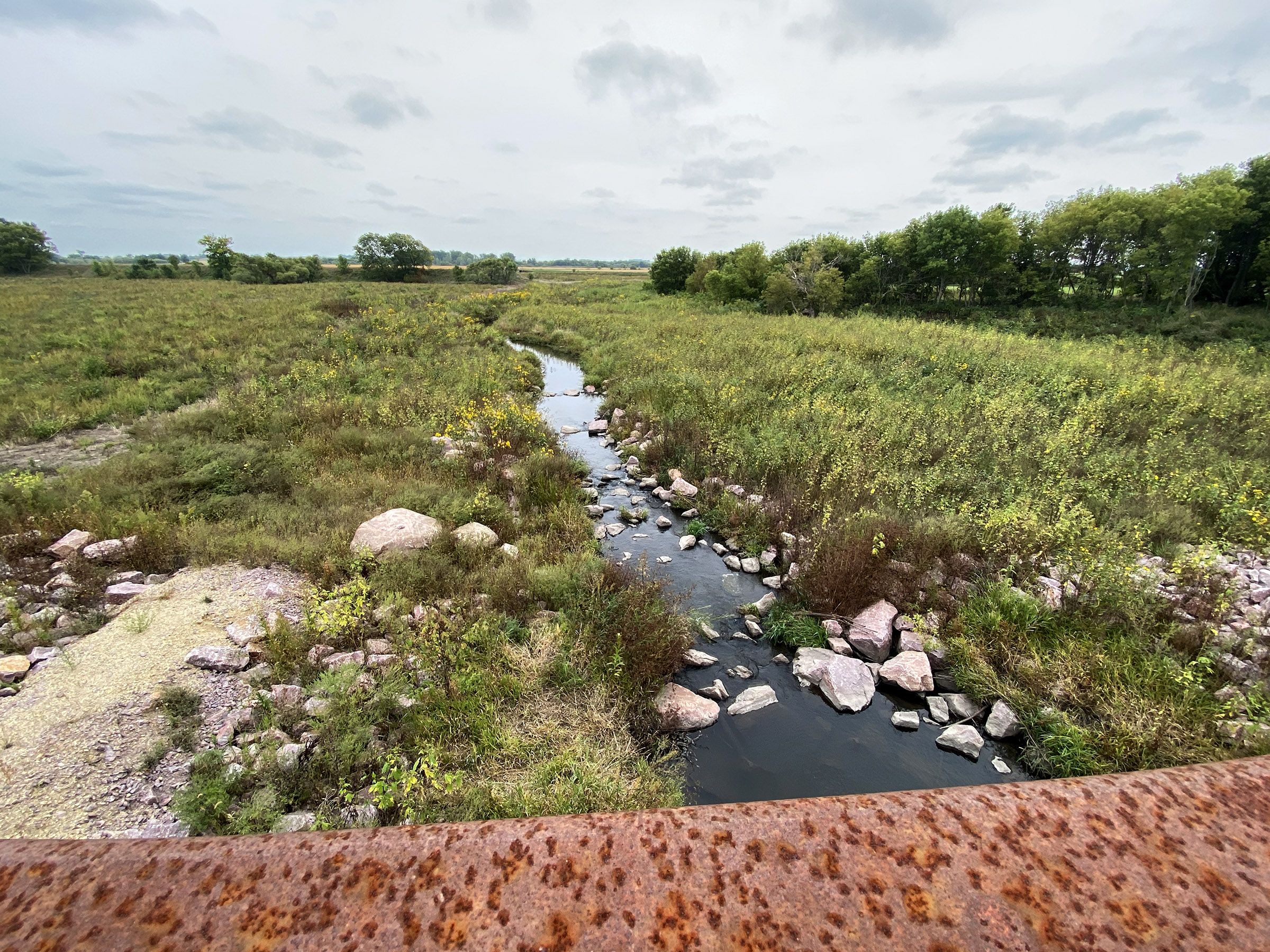
A busload of state and local leaders with Minnesota’s Clean Water Council took a field trip Monday through the Blue Mounds State Park.
It was part of the council’s southwest Minnesota tour of projects funded by the state’s Clean Water Legacy Act.
Of particular interest was the former Lower Lake of the park that drained in 2014 when flood waters destroyed the dam.
In the years since then, the Minnesota DNR and state hydrologists implemented a plan to restore the drainage area to pre-dam conditions — prior to the 1930s.
The goal was to create a naturally meandering, stable stream channel to improve habitat for native species and improve protection for drinking water in the 16-acre watershed to the Rock River.
Brooke Hacker, water quality specialist with the DNR, played a major role in the six-year restoration project and said habitat numbers have already improved since the work was completed.
“This whole park has a very outstanding biological significance,” she told the group gathered at the park.
Of concern were the endangered Topeka shiner and plains topminnow, but other species such as pond mussels, Blanchard cricket frogs and Blandings turtles are also thriving.
“That’s a major accomplishment,” Hacker said. “We have the fish data to show those rare species are here.”
She said she’s waiting to see the water quality data, because Mound Creek is known to be impaired for bacteria, such as E-coli.
Funding for the Blue Mounds State Park project, a total of $1.99 million, came from the Minnesota DNR Disaster Bond (FEMA), Lessard-Sams Outdoor Heritage Council and the U.S. Fish and Wildlife Service.
Roughly 4,200 feet of channel was excavated in the historic lake sediment. Seven oxbows were created for Topeka shiners and other species, rapids were built to connect steeper grades, and an 80-foot bridge was built to span rapids and allow access to trails.
In addition to providing improved habitat for diverse species, the new floodplain allows for water storage above “bankfull” flows and sediment and nutrient treatment from upstream sources.
Essentially, the park’s new water feature filters and cleans ground and surface water as it makes its way through a sensitive area en route to the Rock River and underground aquifers.
During Monday’s tour, Doug Bos updated tour participants on the role of Blue Mounds stream restoration in the broader effort to improve and protect Rock County’s surface water and drinking water.
Bos, assistant director of the Rock County Land Management Office, pointed out that the state park is in the county’s One Watershed One Plan for improving water quality.
And it’s also part of an EPA 319 grant, the seasonal riparian area management project of Rock and Pipestone counties, which promotes pasture management and livestock health to improve stream health.
USFW received a $1.4 million grant for Pipestone and Rock counties.
“We did 110 oxbows — old meander channels, 67 in Rock County, in pastures and areas like over here,” Bos said.
“They all had water and they all had minnows in them. So, it was successful, the design that the DNR and USFW has done well.”
Hacker said that in addition to providing habitat and clean water, the Blue Mounds water restoration area is also appealing to humans.
“From what I understand, people in this area really enjoy this park.
She read remarks from local park visitors to close out the tour.
“During the last year with COVID, my husband and I have been grateful to hike the trails,” one visitor wrote. “The new trails through the stream have been particularly restful and relaxing. The feeling of meandering through nature has been essential to our mental health.”
Another shared, “I enjoy being able to walk on newly accessible paths. By the stream banks in the winter, I saw a magnitude of animal prints in the newly fallen snow. In the summer months, the native prairie plants are in bloom and are wonderful examples to identify native species with.”
Frank Juhl, chair of the Clean Water Council, said he appreciated the remarks. “For all the work we do to make sure that these happen, having people say this, the power of it is great.”
Part of the reason for Monday’s tour was to review projects funded by the Clean Water Council, which advises the Legislature and governor on the appropriation of Clean Water Fund dollars and the implementation of the 2006 Clean Water Legacy Act.
Thirty-three percent of the sales tax revenue from the Legacy amendment is allocated to the Clean Water Fund.
Those funds may only be spent to protect, enhance and restore water quality in lakes, rivers and streams and to protect groundwater from degradation. At least five percent of the Clean Water Fund must be spent to protect drinking water sources.
Protecting Minnesota's waters is a joint effort between seven partner agencies, who collaborate and partner on Minnesota's water resource management activities under the Clean Water Fund.


